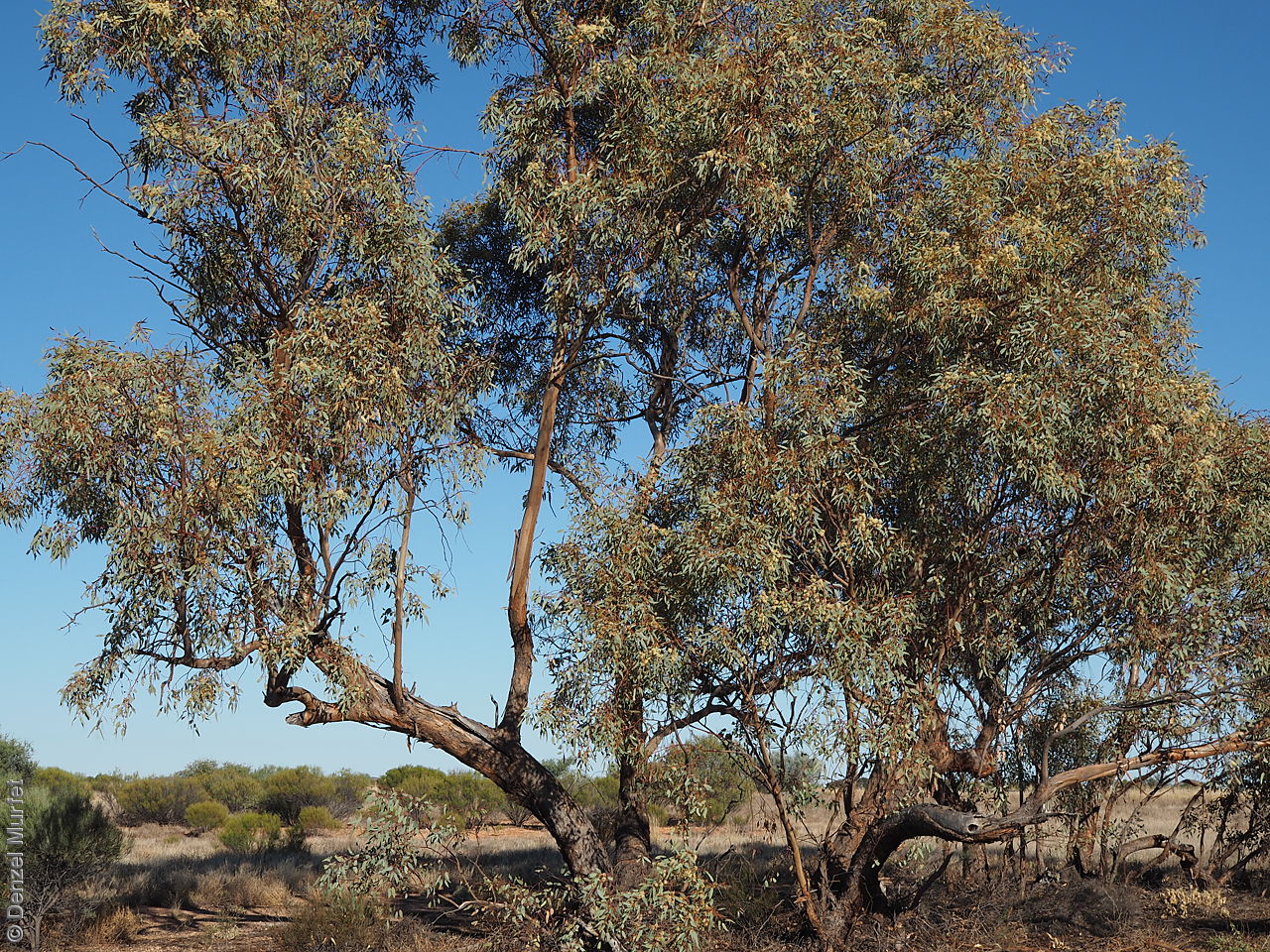
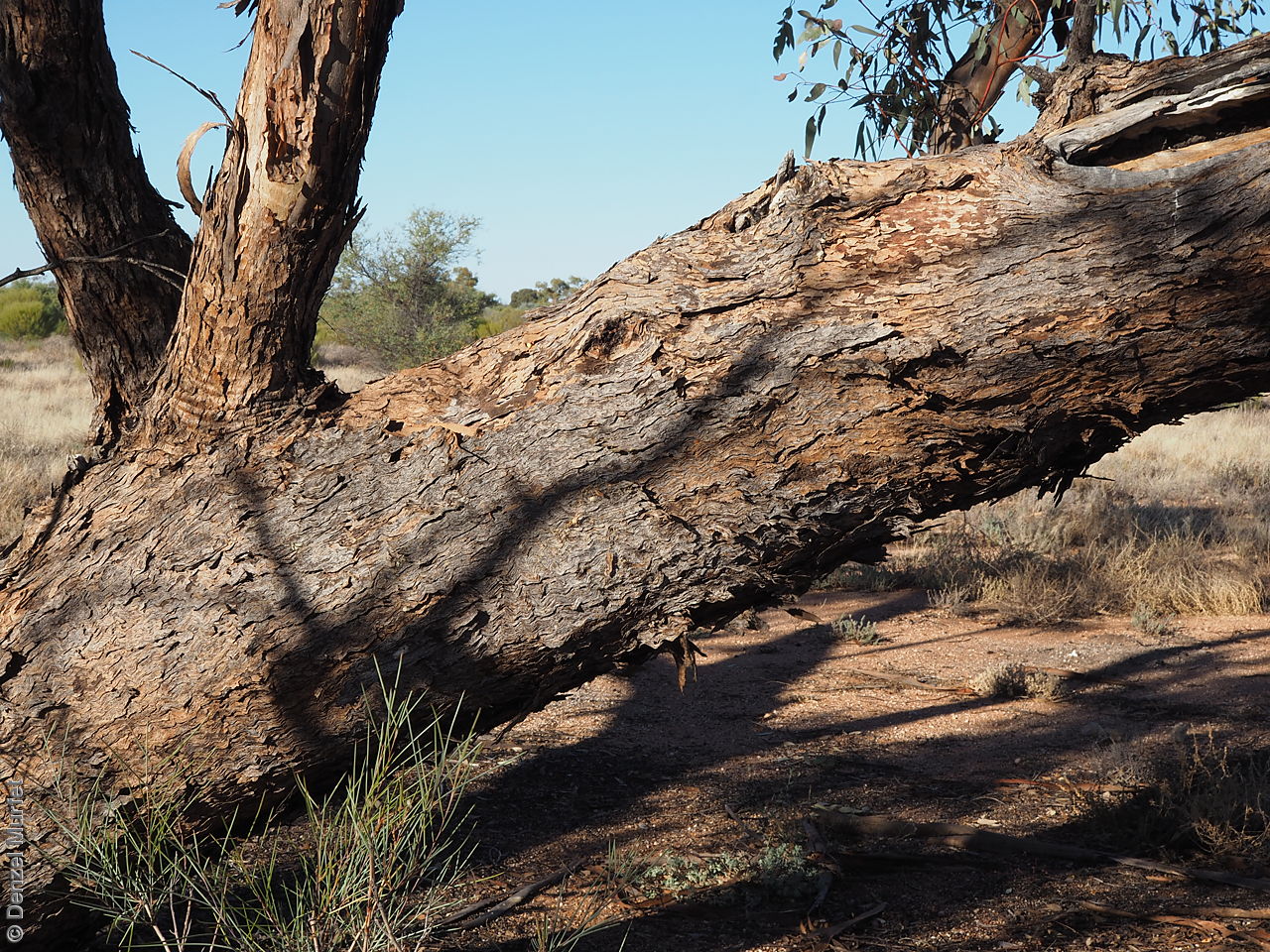
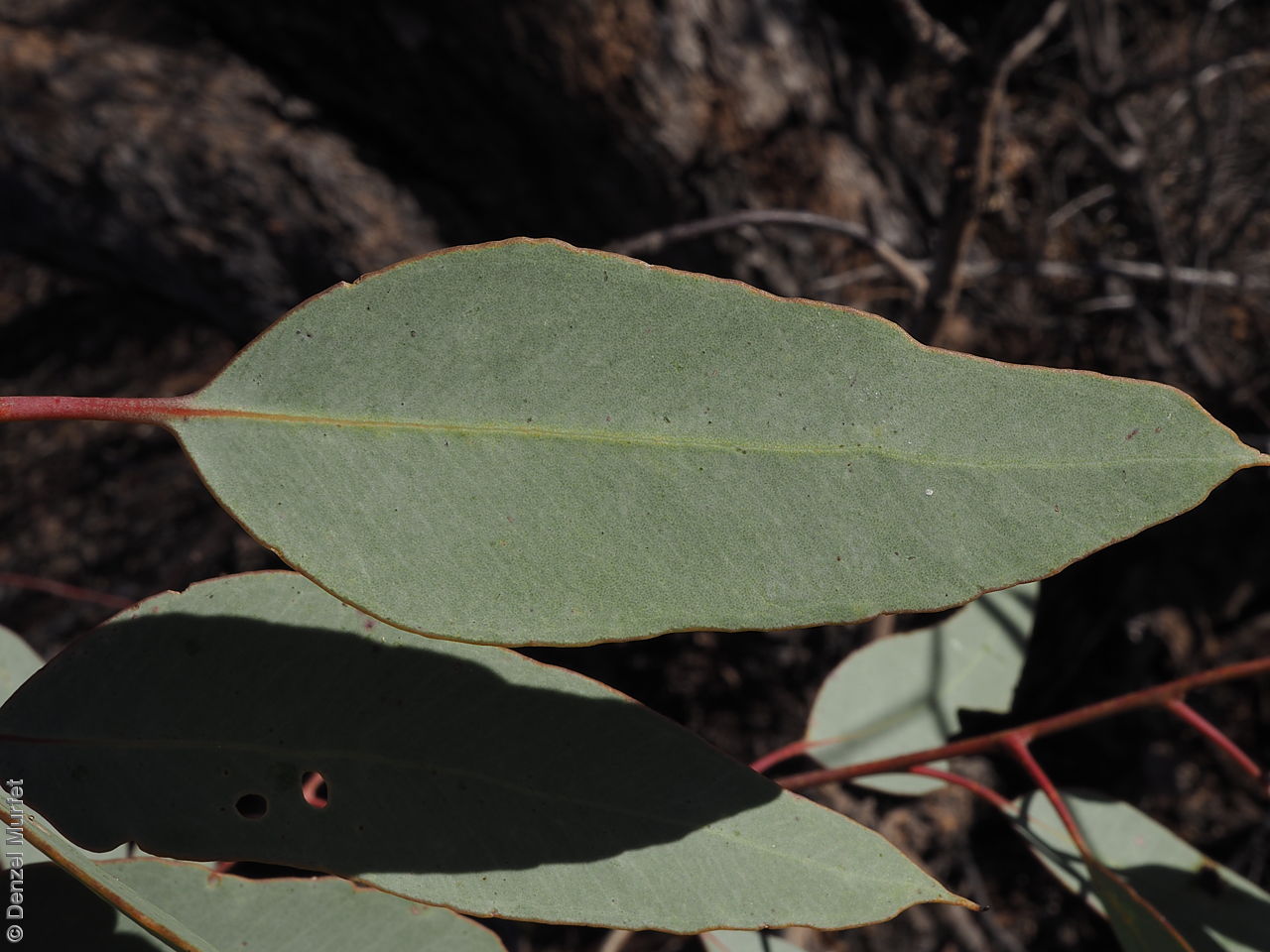
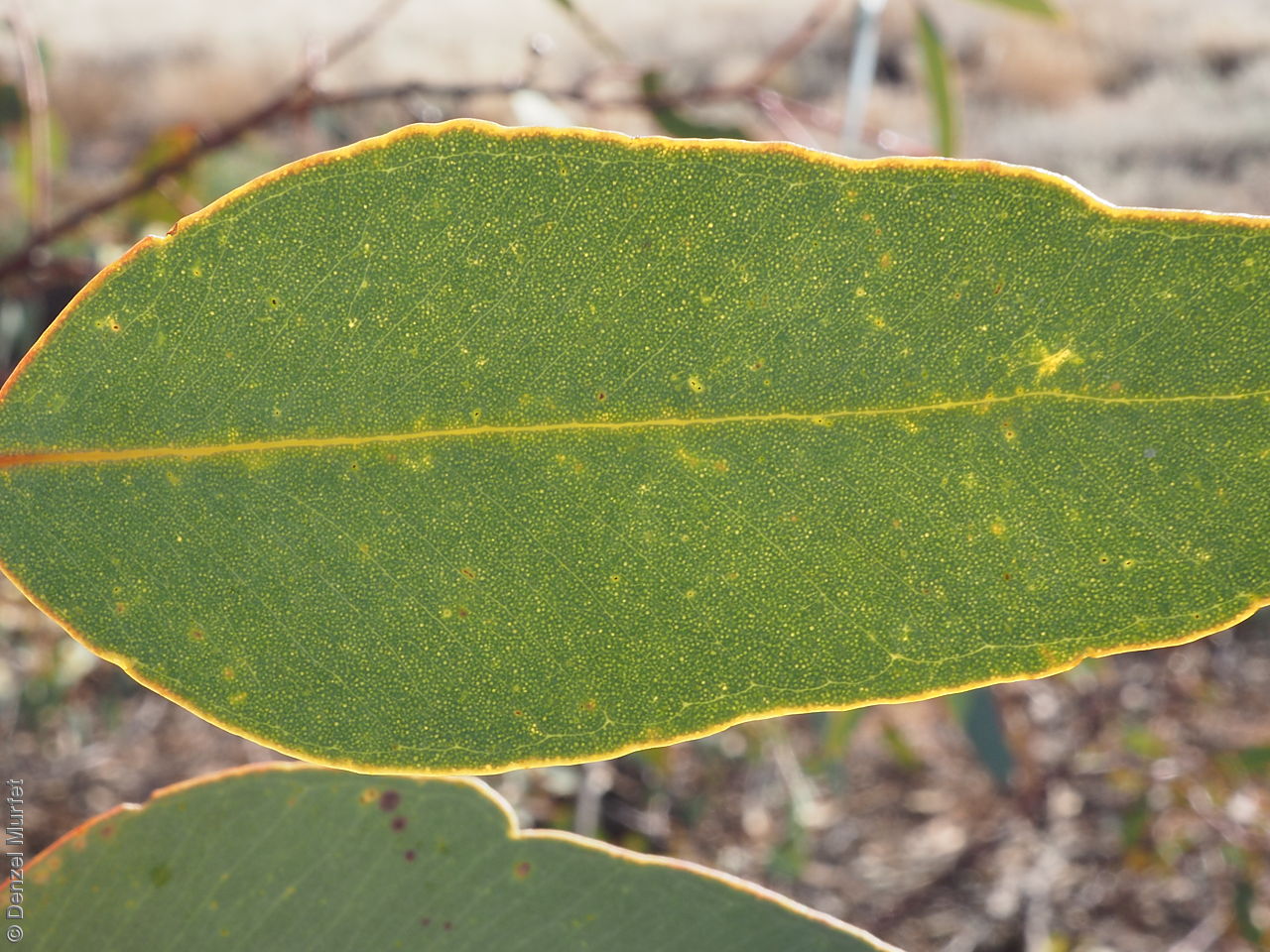
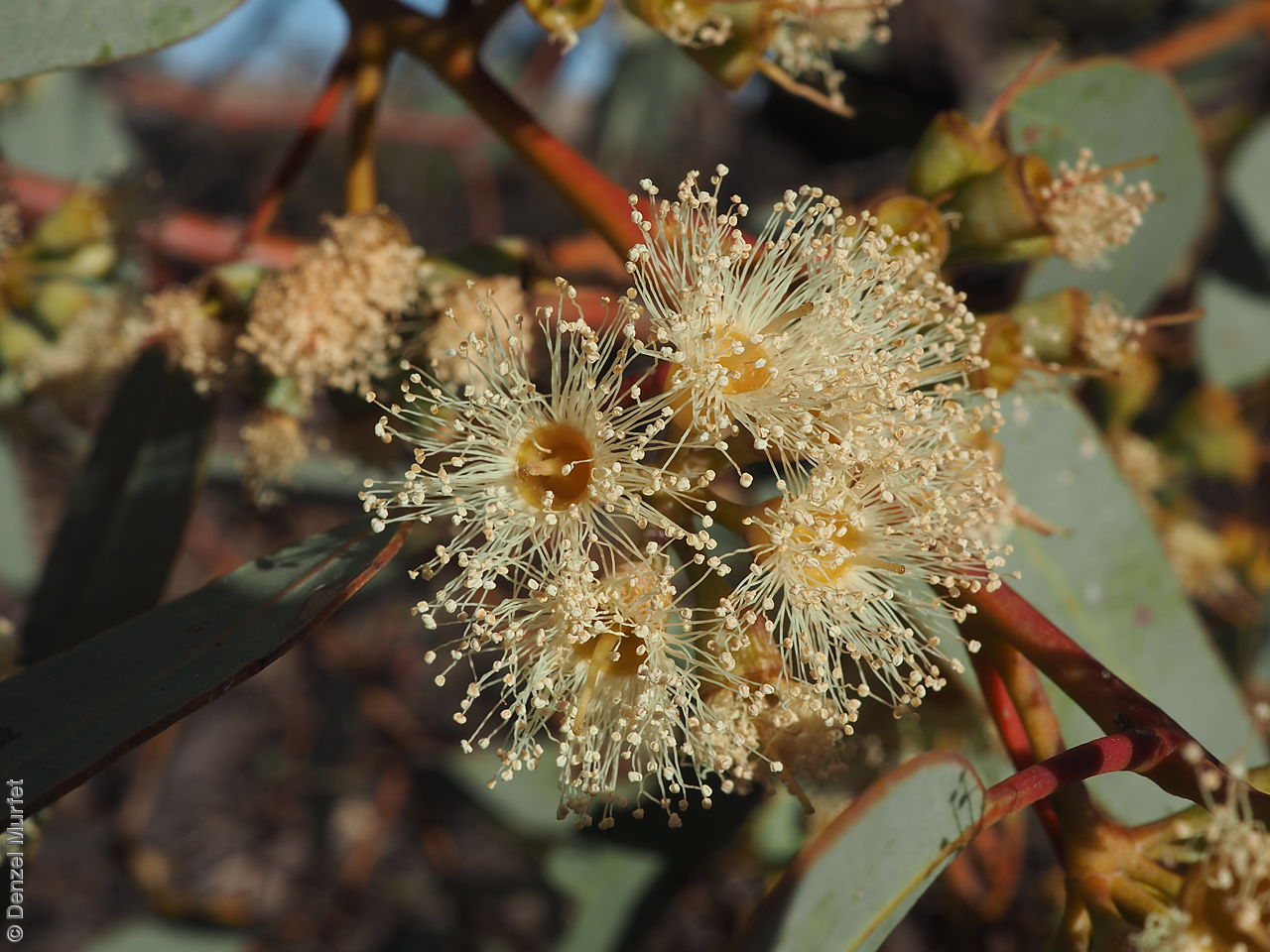
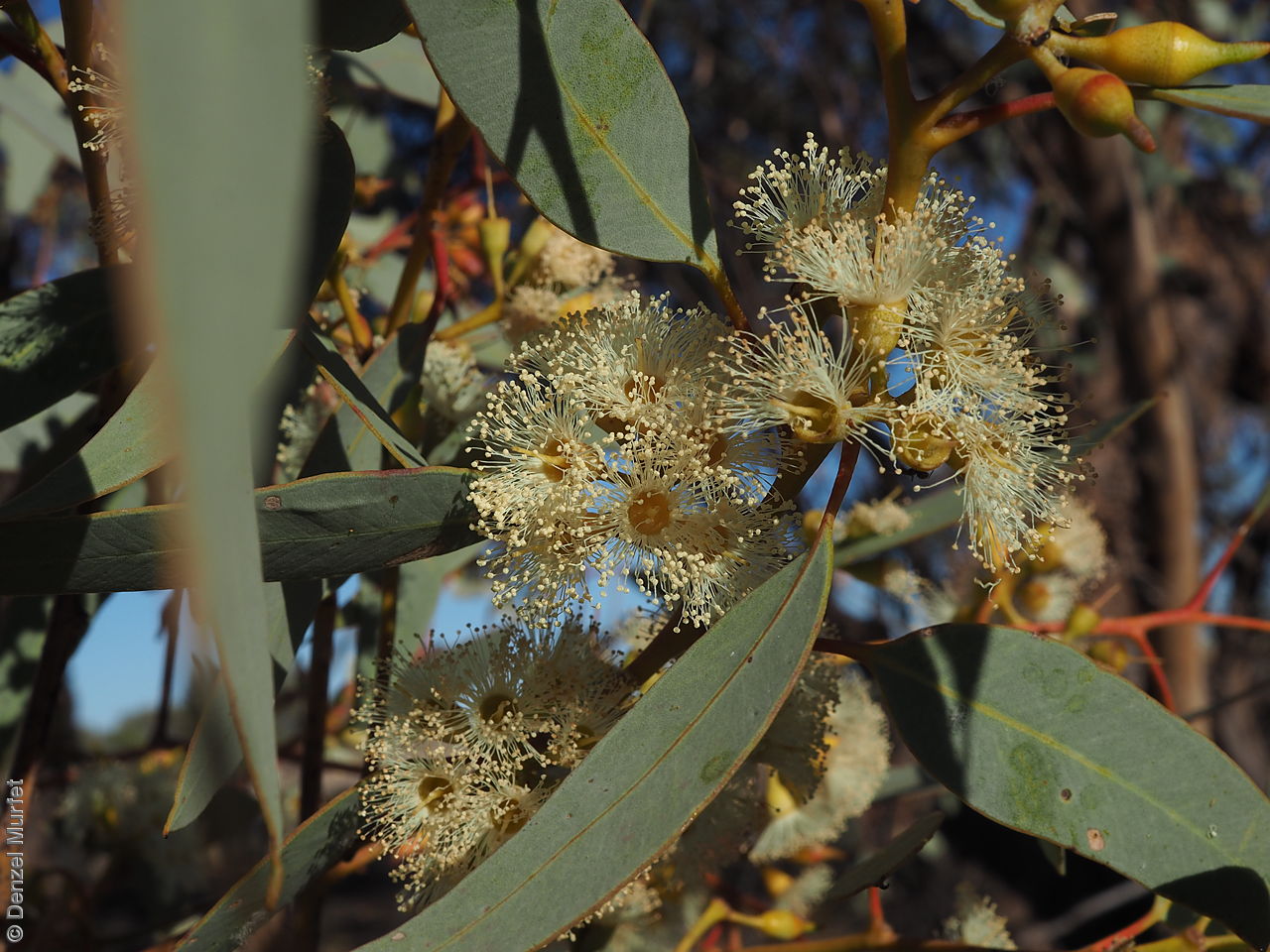
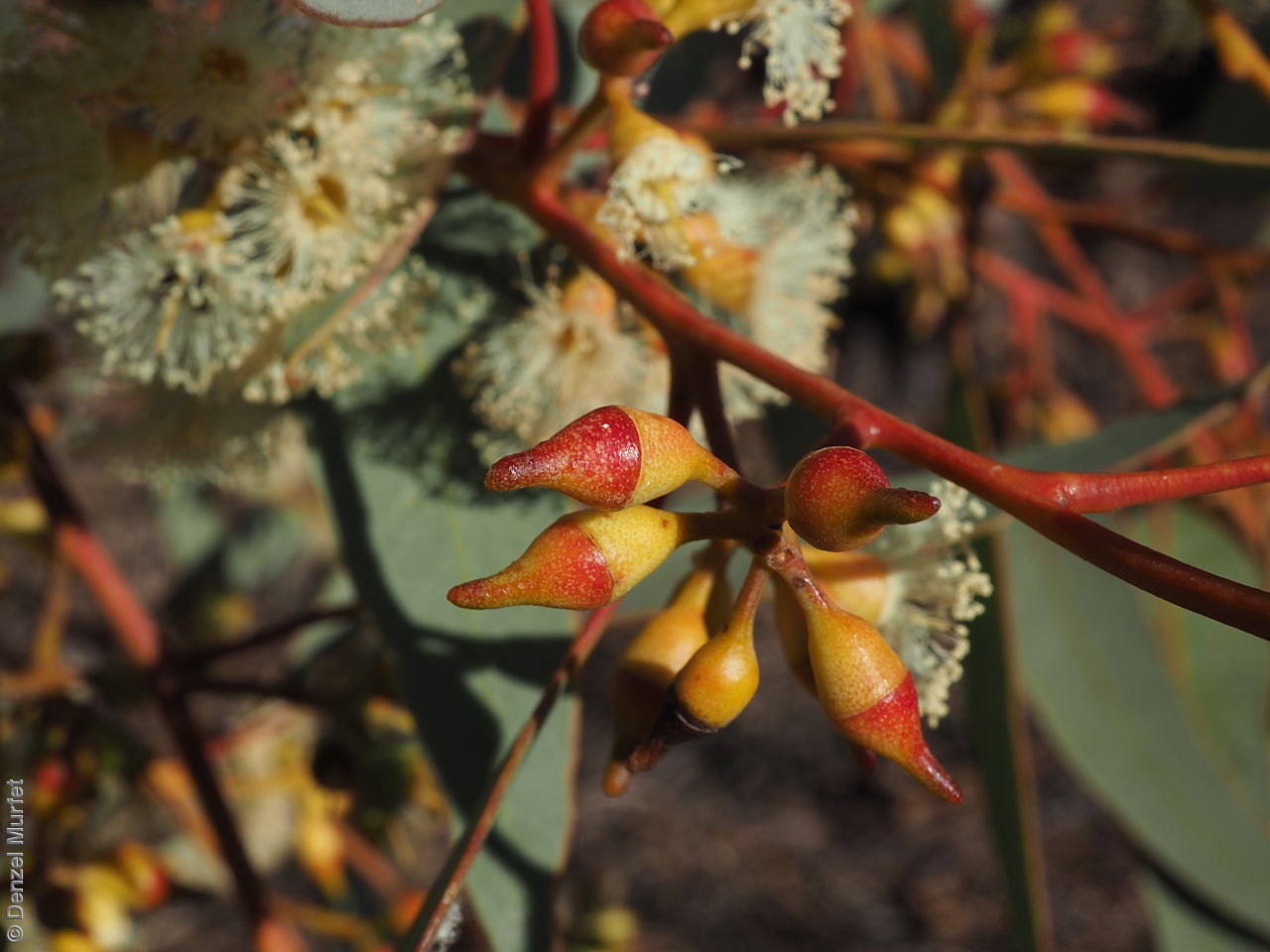
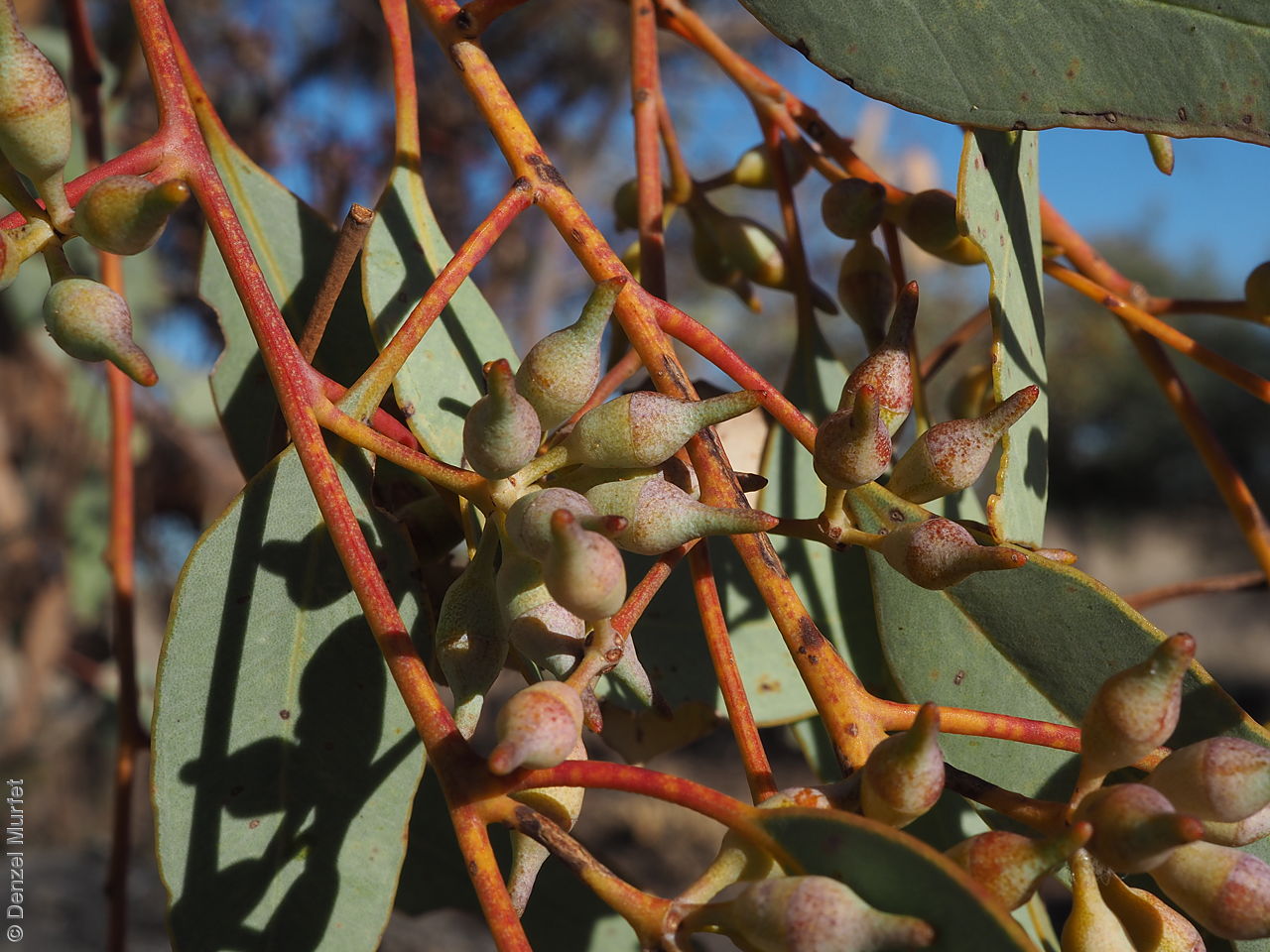
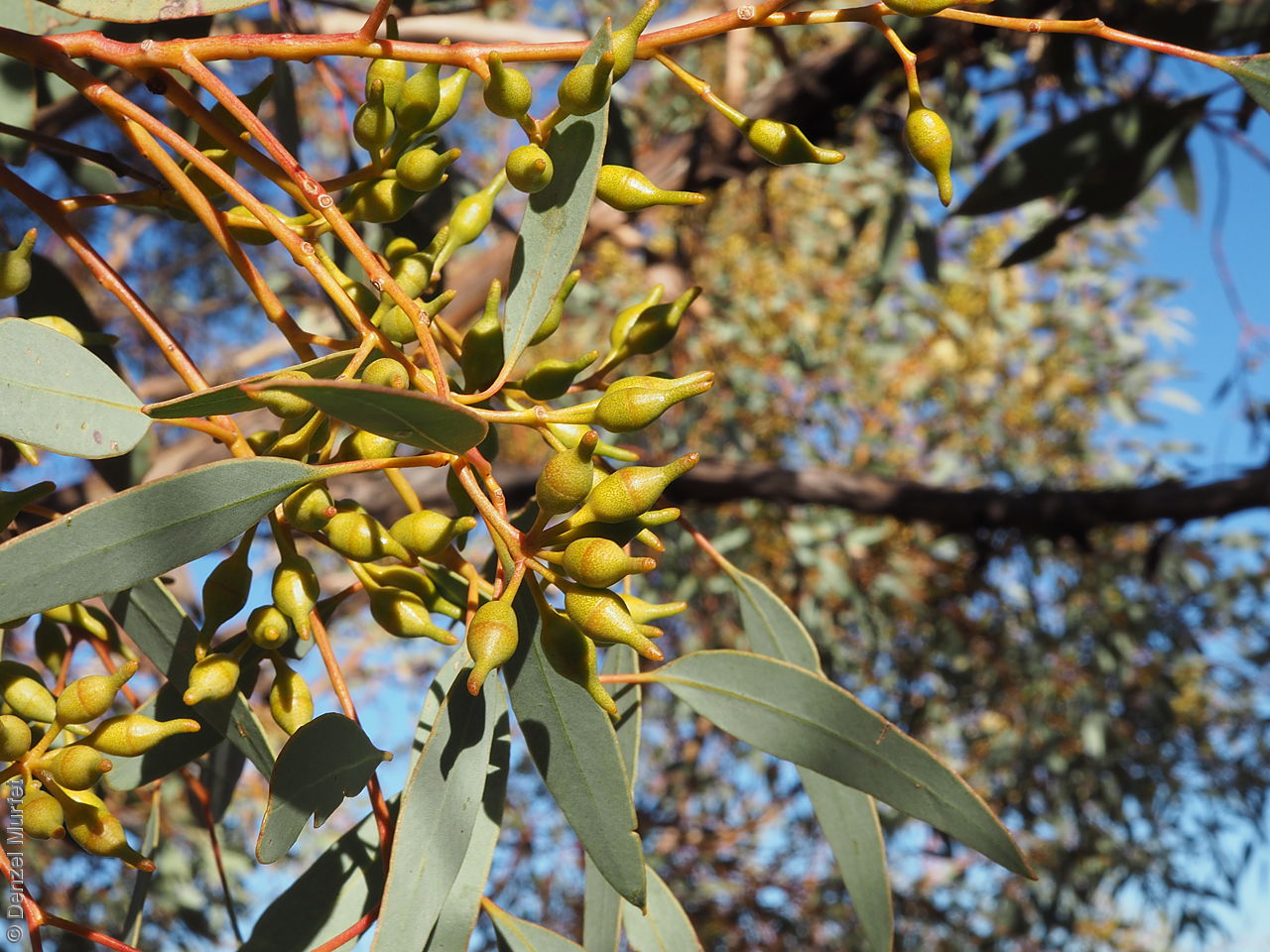
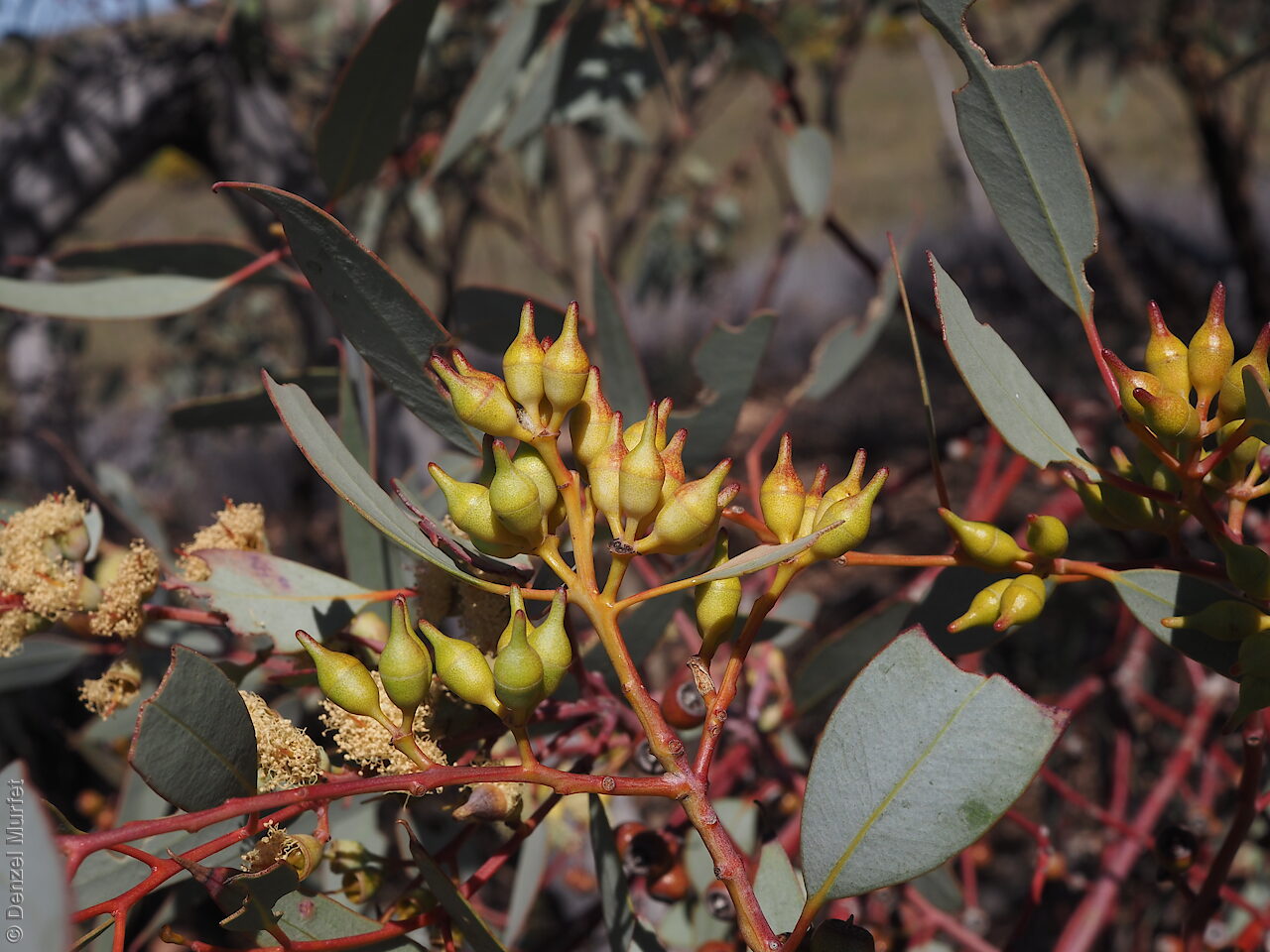
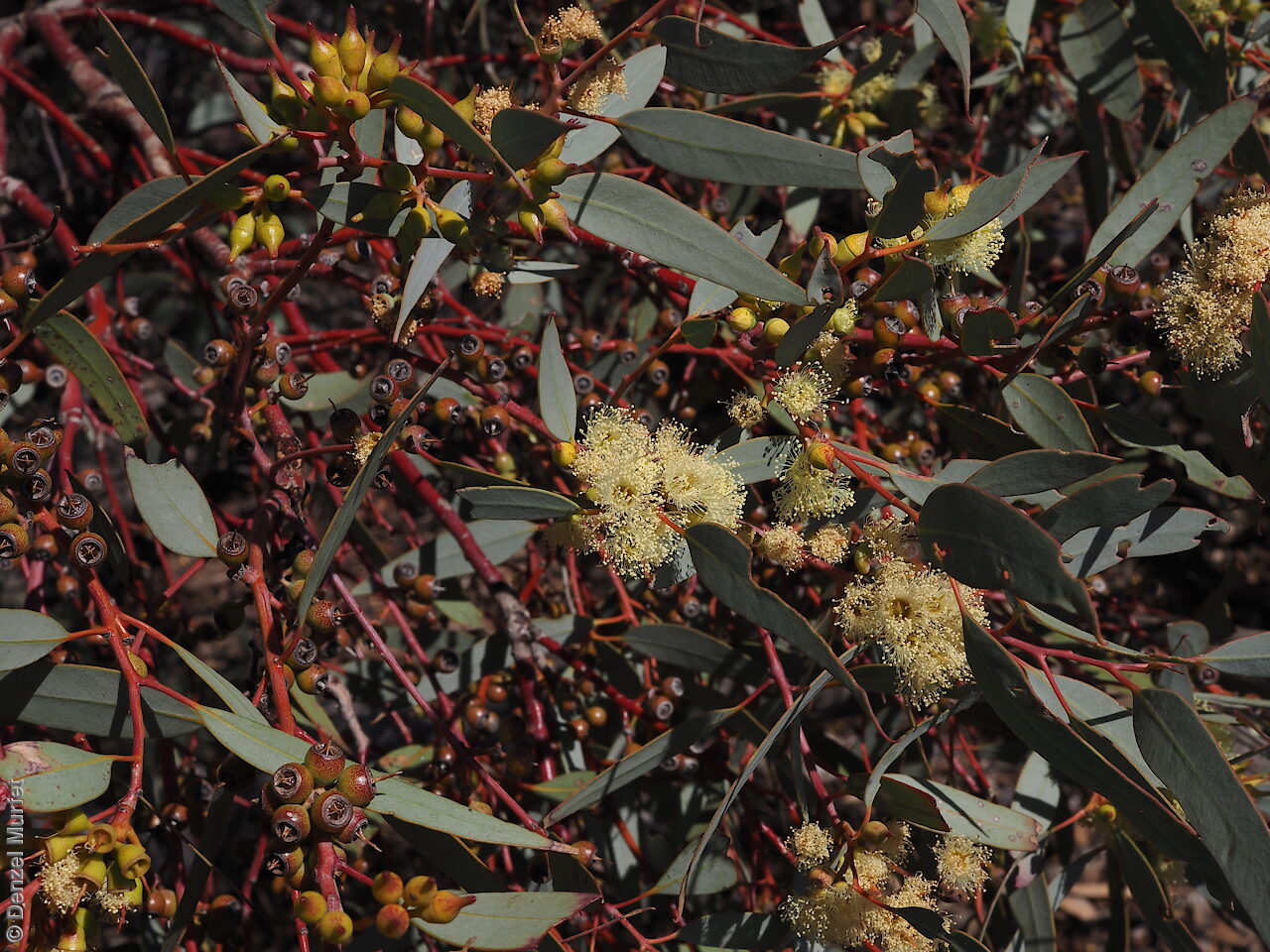
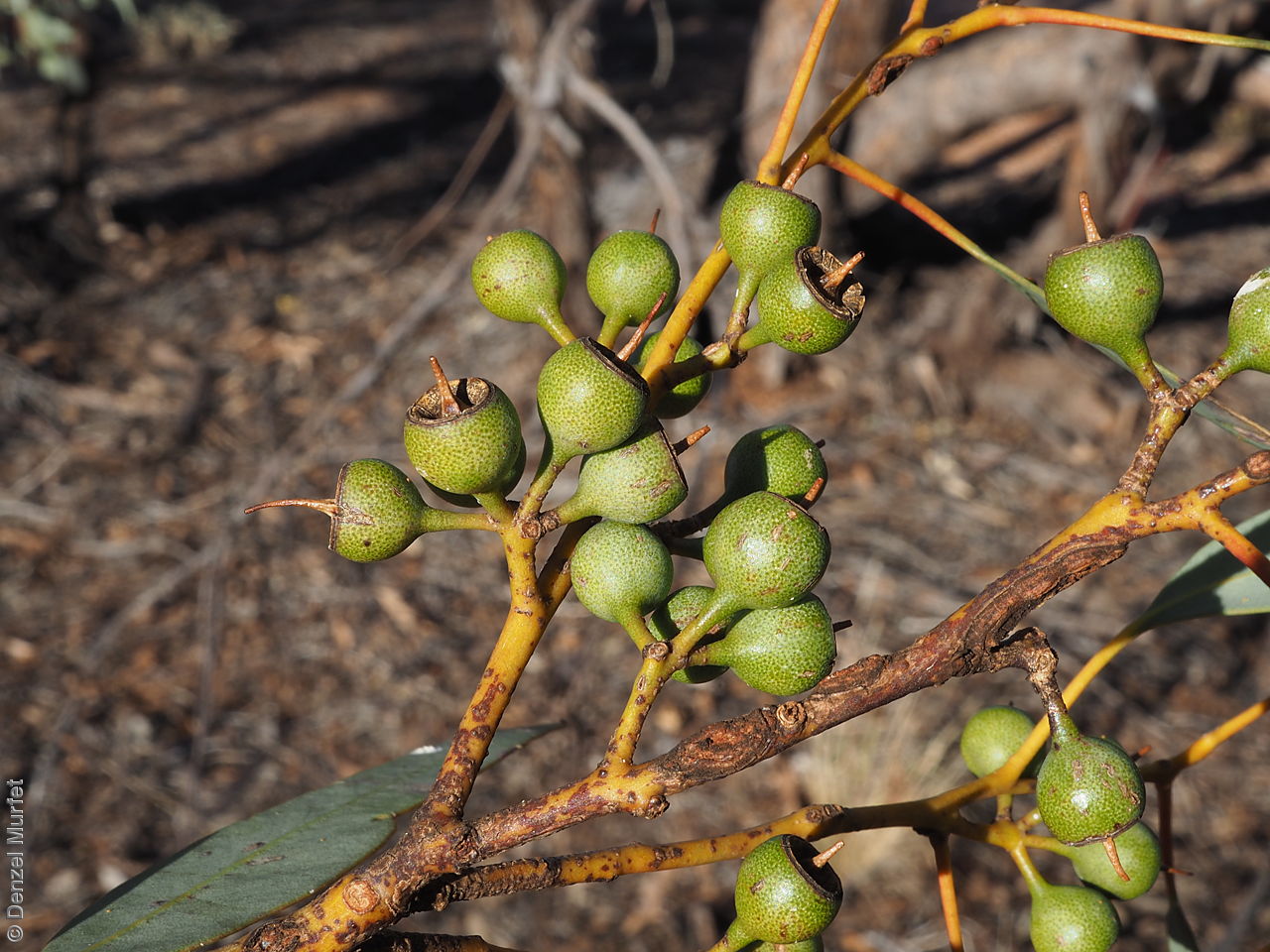
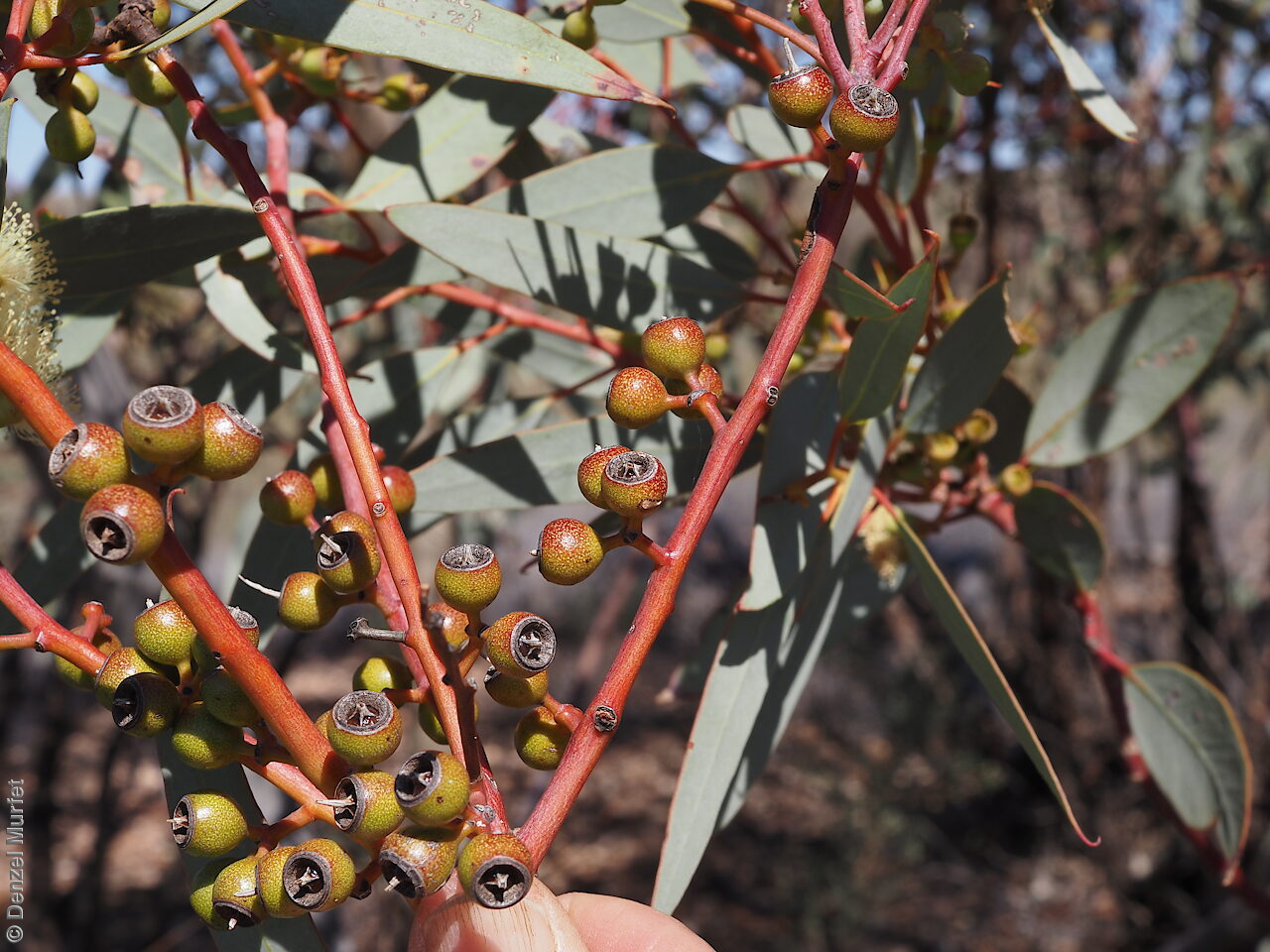
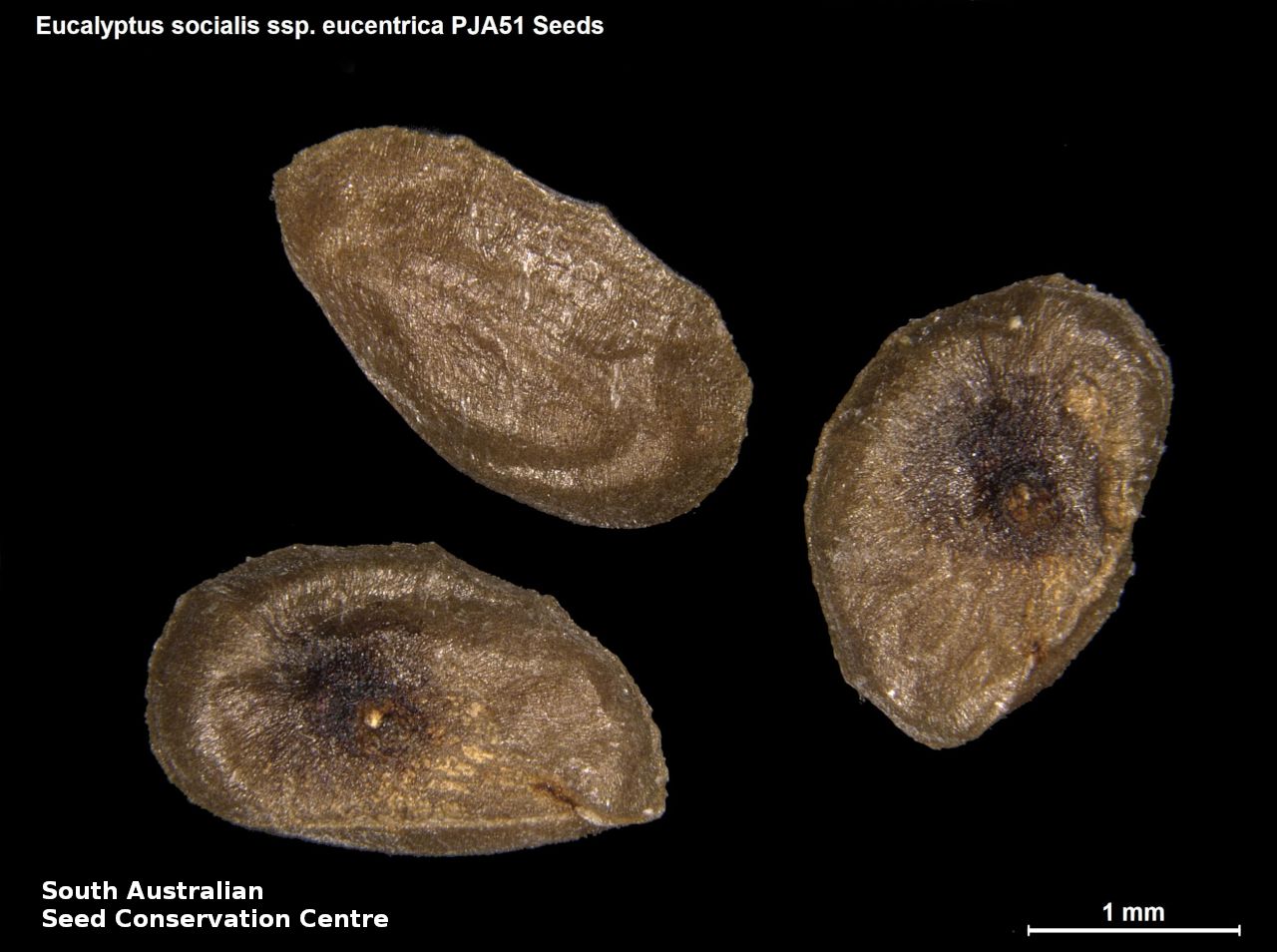

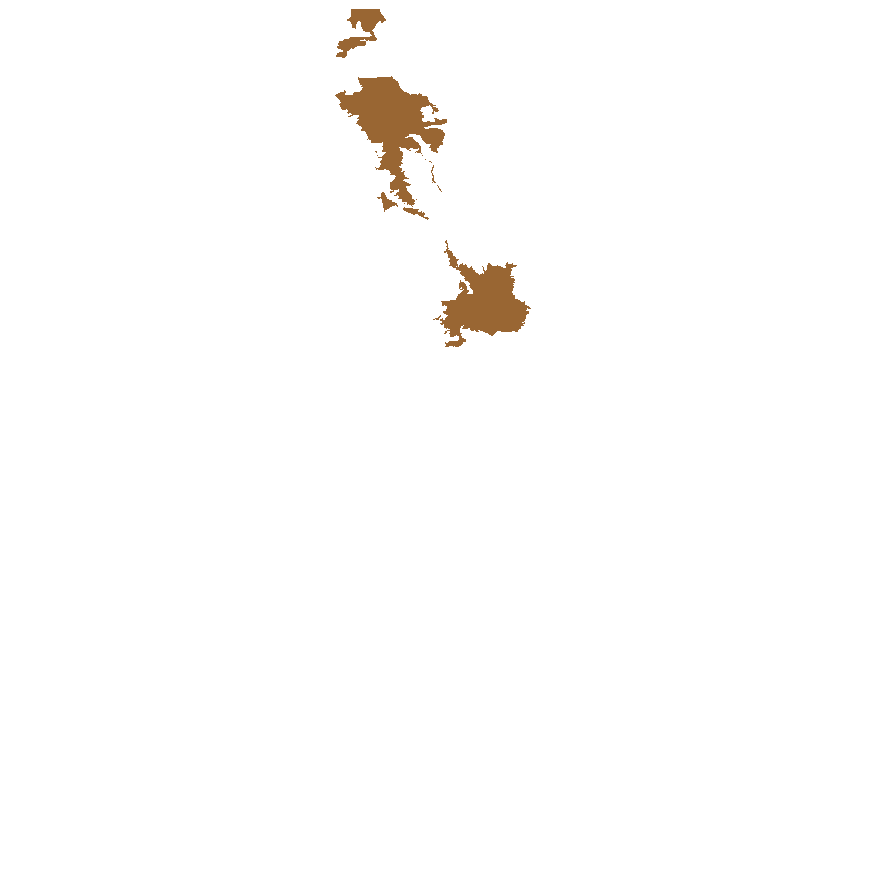
Prior names
Eucalyptus eucentrica
Eucalyptus socialis, partly
Common names
Inland Red Mallee
Centralian Beaked Red Mallee
Etymology
Eucalyptus from the Greek 'eu' meaning well and 'calyptos' meaning covered, alluding to the cap or lid which covers the stamens in the bud. Socialis from the Latin 'socialis ' meaning friendly, alluding to the species being associated with other eucalyptus species. Eucentrica from the Greek 'eu' meaning well and 'kentrikos' meaning of the centre, referring to the species distribution in the interior of Australia.
Distribution and status
Found in the north-west part of South Australia growing in open mallee vegetation on level to undulating ground on stony or sandy rises. Also found in Western Australia, Northern Territory and Queensland. Native. Uncommon in South Australia. Uncommon in Queensland. Common in the other States.
Herbarium regions: North Western, Lake Eyre, Nullarbor, Gairdner-Torrens
NRM regions: Alinytjara Wilurara, South Australian Arid Lands
AVH map: SA distribution map (external link)
Plant description
Multi-stemmed mallee to 10 m high with rough, flaky-fibrous, pale grey to grey-brown bark on lower stems and smooth, tan to pinkish-grey to cream bark above. Young branchlets waxy. Juvenile leaves ovate to lanceolate, waxy, dul, blue-green. Adult leaves to 125 mm long and 26 mm wide, lanceolate, dull blue-green. Flowers in groups of 7-11 in leaf axils. Buds to 13 mm long and 5.5 mm wide; waxy, bud-cap horn-shaped, equal in width and longer than the base. Flower pale creamy-yellow. This subspecies is distinguished from the other three subspecies that occurs in South Australia by its distribution, having waxy branchlets and buds, dull blue-green adult leaves, medium sized buds and fruits and cream to pale yellow flowers. Fruits are round to barrel-shaped fruit to 8 mm long and 7.5 mm wide, waxy when young, disc descending with valves 3-5 below rim. Seeds are brown ovoid seed to 2.4 mm long and 1.5 mm wide, with finely reticulated surface. Seed embryo type is folded.
Seed collection and propagation
Collect seeds between January and December. Collect mature fruits that are dark and hard (difficult to break with a finger nail), with the valves un-open any time of year. Leave the fruits in a breathable container in a dry room for one to two weeks. This allows the valves on the fruit to open and release the seeds. Separate the seeds by placing all the materials into a bucket and shaking it to dislodge the seeds. Pass the material through a sieve to separate the unwanted material. The finer material will contain both seeds (soft) and frass (hard) usually distinguishable from each other but can be very similar in shape and colour. With finer sieves, the seeds can be separated from the frass but this is not essential for storage or propagation. Store the seeds with a desiccant such as dried silica beads or dry rice, in an air tight container in a cool and dry place. From one collection, the seed viability was average, at 70%. Seeds are non-dormant, viable seed should germinate readily.
| Location | No. of seeds (weight grams) | Number of plants | Date collected | Collection number Collection location | Date stored | % Viability | Storage temperature |
|---|---|---|---|---|---|---|---|
| BGA MSB | 2,500 (6.6 g) 2,500 (6.6 g) | 16 | 3-Dec-2003 | PJA51 North Western | 1-Sep-2004 | +5°C, -18°C |
Number of plants: This is the number of plants from which the seeds were collected.
Collection location: The Herbarium of South Australia's region name.
% Viability: Percentage of filled healthy seeds determined by a cut test or x-ray.